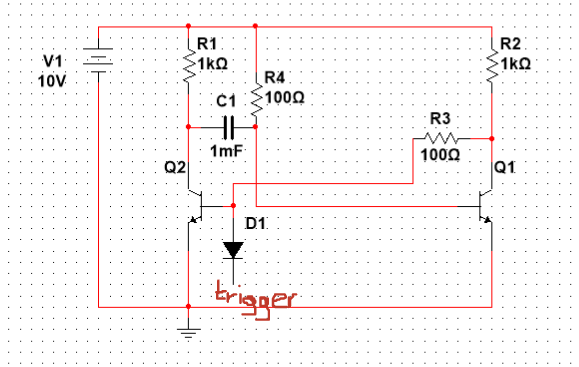Post History
In monostable multivibrators we use a trigger signal applied to the base of the transistor which is usually off to enter the astable region Can we instead have a pin which is connected directly ...
#4: Post edited
- In monostable multivibrators we use a trigger signal applied to the base of the transistor which is usually off to enter the astable region
- Can we instead have a pin which is connected directly to the base of Q1 and when that pin is grounded we will enter to the astable region?
- In monostable multivibrators we use a trigger signal applied to the base of the transistor which is usually off to enter the astable region
- 
- Can we instead have a pin which is connected directly to the base of Q1 and when that pin is grounded we will enter to the astable region?
#3: Post edited
- In monostable multivibrators we use a trigger signal applied to the base of the transistor which is usually off to enter the astable region
- Can we instead have a pin which is connected directly to the base of Q1 and when that pin is grounded we will enter to the astable region?
- In monostable multivibrators we use a trigger signal applied to the base of the transistor which is usually off to enter the astable region
- 
- Can we instead have a pin which is connected directly to the base of Q1 and when that pin is grounded we will enter to the astable region?
#1: Initial revision
Change of pins in monostable multivibrator
In monostable multivibrators we use a trigger signal applied to the base of the transistor which is usually off to enter the astable region  Can we instead have a pin which is connected directly to the base of Q1 and when that pin is grounded we will enter to the astable region?


















